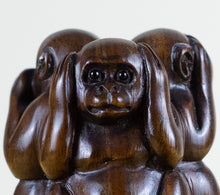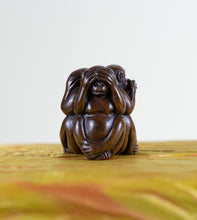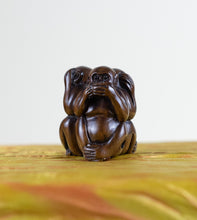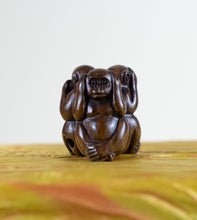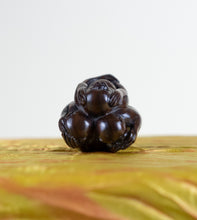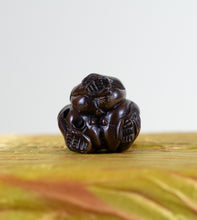JAPAN Netsuke (20th Century)
NAME: Three back-to-back monkeys
See No Evil, Speak No Evil, Hear No Evil
SIZE: 4 cm (1.5 inches tall)
TYPE: katabori-netsuke (形彫根付) or "sculpture netsuke"
This is the most common type of netsuke. They are compact three-dimensional figures carved in a round shape and are usually around one to three inches high.
IMAGE is ACTUAL WORK
Please contact us to request further information or additional images.
A NETSUKE (根付, [netsɯ̥ke]) is a miniature sculpture which originated in 17th century Japan. It started as a carved button fastener which was attached by a cord to an inro box (a container that was hung by a cord and worn around a kosode or kimono). As time went on, artisan created ornate sculpture as a craft.
The inro was first worn on the kosode (1185 – 1867 periods) and then on the kimono since they did not have pockets. The inro stores small objects for the wearer and was bigger than what could be stored in a sleeve. Often, they contained pipes, tobacco, money and seals. They were most popular during the Edo period (1615-1868)







